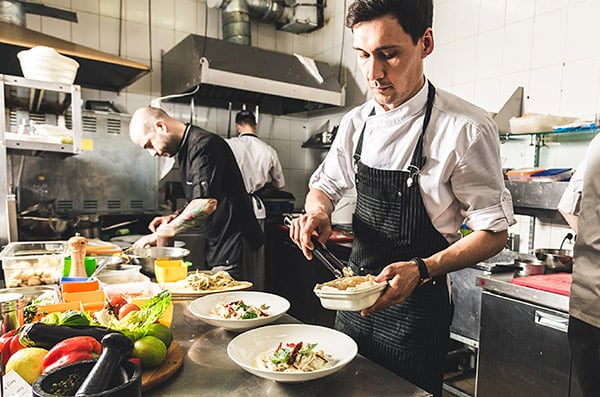The emergence of meal delivery platforms has changed eating experience for consumers. As household names in food delivery become familiar, demand for quick and easy meal services has exploded. Virtual kitchens have become a great answer for restaurant operators trying to maximize their operations and satisfy high demand in response to this expanding trend. The foodservice sector has been transformed by this creative business model—also referred to as ghost kitchens or cloud kitchens. A virtual restaurant operates solely online, without a storefront, offering a variety of cuisines for delivery.
-
Handling the Increase in Order of Delivery
Virtual kitchens are perfect for high-demand food delivery mostly because of their quick and effective scalability capacity. Food delivery companies are becoming more and more popular, hence restaurants—especially during busy times—are getting a spike in orders. Because of their limited space, staffing, and resources, traditional kitchens frequently find it difficult to meet this demand. But virtual kitchens are made especially to manage large numbers of delivery orders. The kitchen can run at full capacity without the distractions of a dine-in restaurant, so guaranteeing speedier delivery times and shorter preparation times. This adaptability lets restaurant owners more successfully satisfy customer demand—even amid peak traffic.
-
Lower Operating Overhead
For conventional restaurants especially, high demand for food delivery usually results in higher operating expenses. Keeping a physical store, running customer-facing employees, and making investments in a big eating area can all be costly. Virtual kitchens concentrate just on food preparation and delivery, therefore removing these expenses. Restaurant proprietors can drastically cut overhead costs without regard to waitstaff, décor, or a front-of-house layout. Virtual kitchens also frequently run out of shared commercial kitchens, which helps to further lower renting and running expenses. Meeting the growing demand for delivery services without compromising profitability depends on this cost-efficacy.
-
Made especially for delivery-only services
Virtual kitchens are especially suited for delivery-only businesses unlike conventional eateries. These kitchens’ design is simplified to manage high number of orders with few delays. The kitchen may be set up to give speed and efficiency first priority as there are no in-house diners to service. Faster turnaround times follow from ingredients prepared, cooking stations arranged for rapid access, and orders handled as they arrive. To guarantee that orders are created and sent quickly, virtual kitchens might also make investments in specialist technologies including delivery tracking and order management systems. In a fast-paced delivery setting, this is absolutely vital for satisfying consumer expectations.
Virtual kitchens provide restaurants trying to maximize their operations and satisfy customer expectations the ideal answer as the demand for meal delivery keeps growing. Virtual kitchens provide major benefits for companies in the highly sought-after food delivery market from lowering operational overhead to increasing delivery efficiency and scalability. Using this creative approach will help restaurant owners not only improve their capacity to satisfy the rising expectations of the delivery-driven market of today but also simplify their operations. The virtual restaurant models are growing globally, especially with the rising demand for food delivery and takeaway options.










